Some lanes are not just a way where people commute, they add a character to the city. Our country has an ample amount of heritage, culture, diversity and so do our lanes! Here we have picked up 10 streets that will represent the rich culture of India and will fascinate you.
![]()
1. Colaba causeway, Mumbai
Colaba causeway originated in the late 17th century by the Portuguese, making it one of the oldest markets. It further developed under the British East India Company completing in 1838. The area grew rapidly especially after the construction of the Cotton Exchange at Cotton Green in 1844. It further continued to expand in 1861 and 1863. Officially it’s known as Shahid Bhagat Singh Road now.
It is termed the ‘Culture Square’ of Mumbai. The surrounding building’s architecture gives a glimpse of old Mumbai. For example, the National Gallery of Modern Art (NGMA), Regal Cinema, Chhatrapati Shivaji Maharaj Museum. The lane has restaurants, cafes, and roadside eateries that are more than 100 years old, like Cafe Mondegar, and Cafe Leopold. Also, it houses various art galleries making it a wonderland for the artist community. Moreover, it has a prime location and has easy access to the Gateway of India and Hotel Taj.
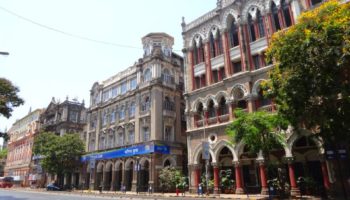
2. Connaught Place, New Delhi
In 1911 when British Empire was transferring the capital from Calcutta to Delhi, they wanted to create a new metropolis. An Indian sub-continent that will be an architectural marvel, like an Anglo Indian Rome.
In 1917 Robert Tor Russell the Chief architect-designed and detailed the plans. The initial idea was to develop a Cultural-Residential-Retail hub for the Imperial city of New Delhi. The design involves a central park, three circular avenues, two concentric circles of buildings divided into blocks, a double-height colonnade in the innermost circle, and radial roads that will connect the circles.
During the construction, the British ran out of money. Hence, the land was later sold in pie-shaped parts to individuals. Currently, it is one of the prominent places in Delhi having Georgian-style architecture. It has all the A-list brands, restaurants, and cafes.
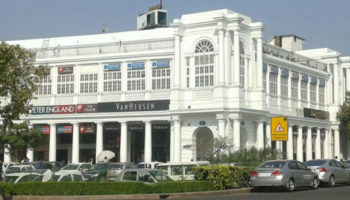
3. Dadabhai Naoroji Road, Mumbai
Dadabhai Naoroji Road is a North-South commercial arterial road, in the Fort area of South Mumbai. The lane starts from the Crawford Market, connecting Victoria Terminus, joins to Flora Fountain towards the South.
In colonial rule, the lane was known as Hornby Road named after William Hornby, Governor of Bombay from 1771 to 1784. The Road was further developed into a broad avenue with many buildings constructed during 1885-1919. The buildings on this stretch are built in Neo-Classical and Gothic Revival Styles from the 19th century.
By 1989, under the public design controls imposed by the City Improvement Trust, Hornby Road developed as one of the prime urban design statements in the city. Now, this street is popular for shopping, hawkers selling leather goods, numerous bookshops, and many other heritage buildings. According to Heritage Regulations of Greater Bombay Act 1995, D.N.Road, holds an immense value as a historic urban streetscape. It has grade 2 A heritage streetscape designation.
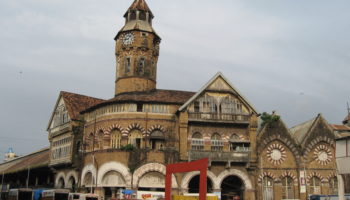
4. Fontainhas, Goa
Fontainhas is an old Latin Quarter in Goa. It was founded by a wealthy Portuguese named Antonio Joao de Sequeira in the late 18th century. His purpose was to use the land for his coconut plantations. In the early 19th century, there was an outbreak of an epidemic in Old Goa. Due to this, the Portuguese government headquarters shifted their base to Panjim. Hence the area was transformed into a residential zone for Portuguese administrative officers and rulers. In 1984, UNESCO designated Fontainhas as a Heritage Zone.
The architecture around the lane maintains its heritage aura gives a peek into Portuguese influence in the area. There are winding streets resembling many European cities, old villas, and buildings with projecting balconies painted in the traditional color of pale yellow, green, or blue, and roofs made of red tiles.

5. Hazratganj, Lucknow
If we are talking about the iconic streets, how can we leave ‘Nawabo ka shehr’! The famous Hazratganj lane lies in the heart of Lucknow. Sadat Ali Khan founded the lane in 1810. It was known as “Hazratganj” in 1842 and later popular as ‘Ganj’.
After the First War of Independence in 1857, the British took over Lucknow. The development of Hazratganj was similar to Queen Street in London. It was called ‘the Mall’ during British Raj. The 2km long stretch comprised Lucknow’s first bank, fire station, ice factory, and English movie theatre that came up during the Raj days. Currently, it serves as a shopping area with heritage buildings nearby and attracting a lot of attention from tourists.
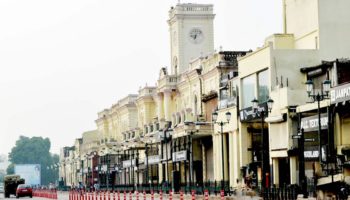
6. Mall Road, Shimla
Mall Road is the central downtown of Shimla. It demonstrates pedestrian tourism by not allowing automobiles, except emergency vehicles on the road, and gives people the freedom to move around.
The mall road adopts the concept of British High Street. It is a 6km road stretch that houses various heritage buildings and government offices. Like, Vice Regal Lodge (Indian Institute of Advanced Studies), Gorton Castle Building, Railway Building, State Bank of India, Telegraph Building, Town Hall, Gaiety Theatre, Clarkes Hotel, and much more. The lane also offers beautiful scenery throughout the stretch with deodar, pine trees, and Himalayan Cedar. And you can also spot the distant views of the long-range snow-covered Greater Himalayas.
An Interesting fact, the Town Hall Building built in 1908 by Scottish Architect James Ransome now houses the Shimla Municipal Corporation. The building supports the surrounding architecture and gives the feel of the pre-independence era.
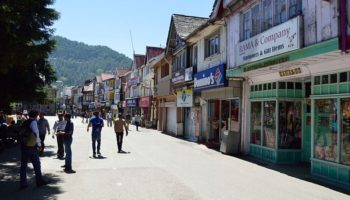
7. Park Street, Kolkata
Park street was developed under British rule and now officially it’s known as Mother Teresa Sarani. Currently, it remains Kolkata’s go-to place for dining. It has many restaurants and pubs. As a result, its other names are “Food Street” and “The Street that Never Sleeps”. This makes it one of the prime commercial and entertainment areas of the city.
The street has the perfect amalgamation of colonial charm and modern appeal. Park street connects with several important roads originating from northward and southward directions.
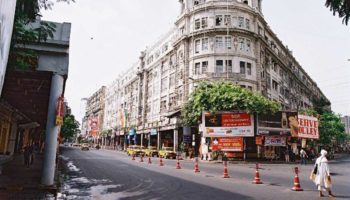
8. Rajpath, India
Rajpath is the ceremonial boulevard running from the Rashtrapati Bhawan to Vijay Chowk and India Gate to ending at the 16th-century fort, Purana Qila. In the early 20th century, Britishers named the road ‘Kingsway’ to honor King George V.
The government-appointed Sir Edwin Lutyens to construct the modern imperial city. He centered the city around a “ceremonial axis”, now known as Rajpath. It has lawns on both sides with rows of trees and ponds. Moreover, It is one of the most important roads in India because of the annual Republic Day parade that happens here.
The road further connects to Raisina Hill, India’s administrative center. It is also closer to Janpath, Connaught Place, Parliament House, and India Gate. All of the locations hold an important heritage value.
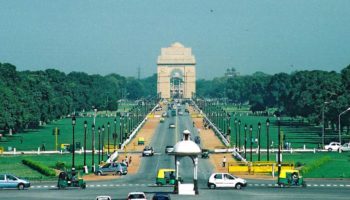
9. Sector 17, Chandigarh
Before Chandigarh became India’s first planned city, it was just a bunch of 50 villages. The commercial hub of Le Corbusier’s city Sector 17 was Rurki village. Now it has turned into a beautiful streetscape that has fountains, sculptures, and tree groves. Now it functions as a big open-air club having many top brand showrooms and restaurants.
Also, there is the National Gallery of Portraits in Sector 17B. It exhibits photographs from India’s freedom struggles and manuscripts from this area that are historically rich.
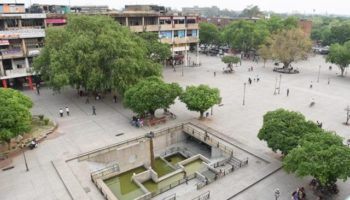
10. Tripolia Bazar, Rajasthan
Tripolia Bazar is an important area of old Jaipur city famous for Lac jewelry. The bazaar street is in line with the Tripolia Gate since 1734. The Tripolia Gate functioned as the main entrance to the City Palace. However, it was only accessible to the royal family and their guests to enter the palace. It’s one of the oldest and the busiest markets of Jaipur located in between Manak Chowk and Chhoti Chaupar.
The Maniharon ka Rasta of Tripolia Bazar now has several shops selling a wide range of brassware, ironware, carpets, textiles, furniture, utensils, rugs, and much more than just lac bangles. Making it a busy market till now.
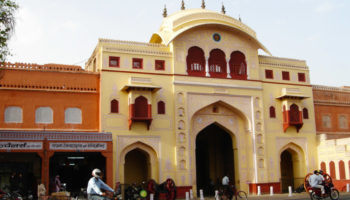
Related: